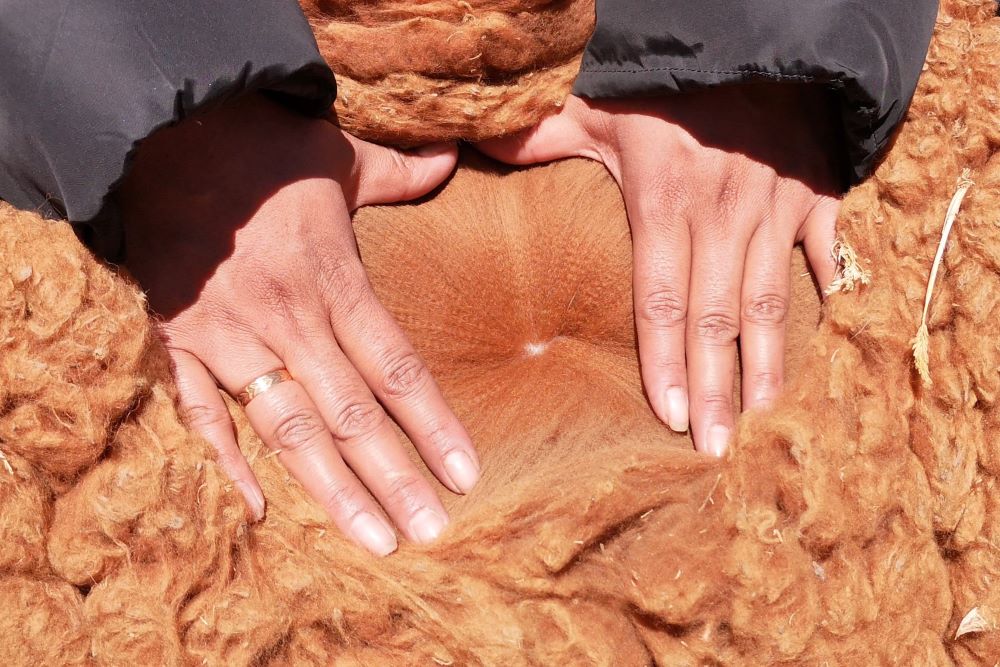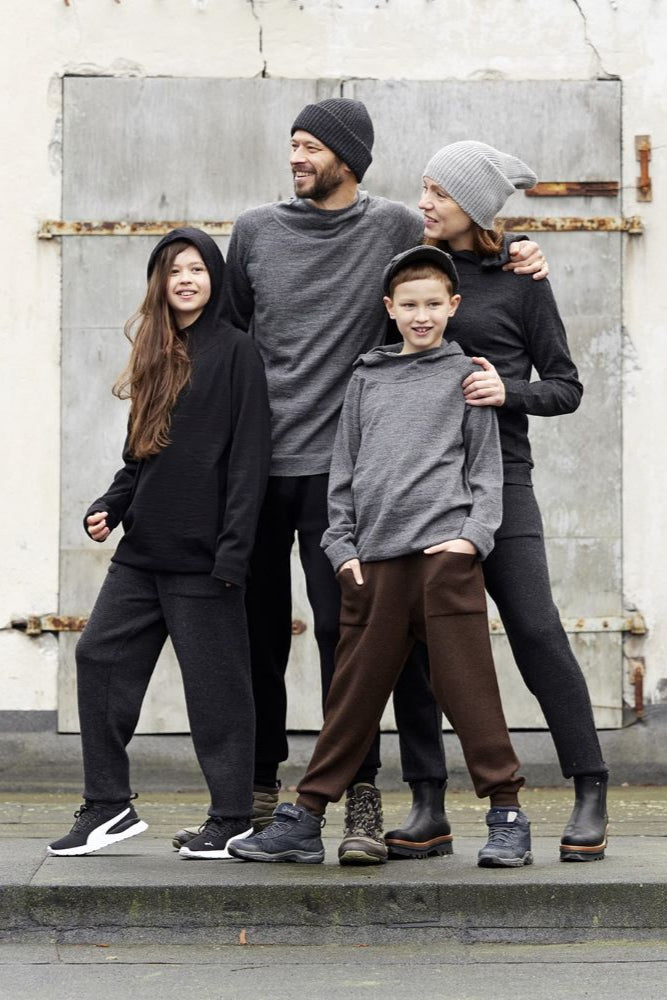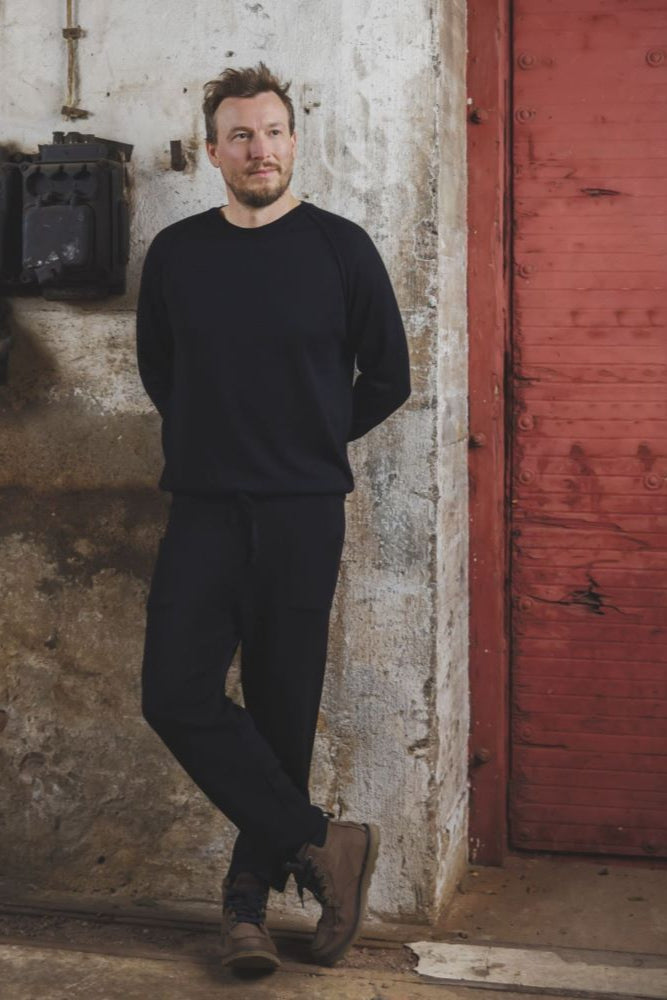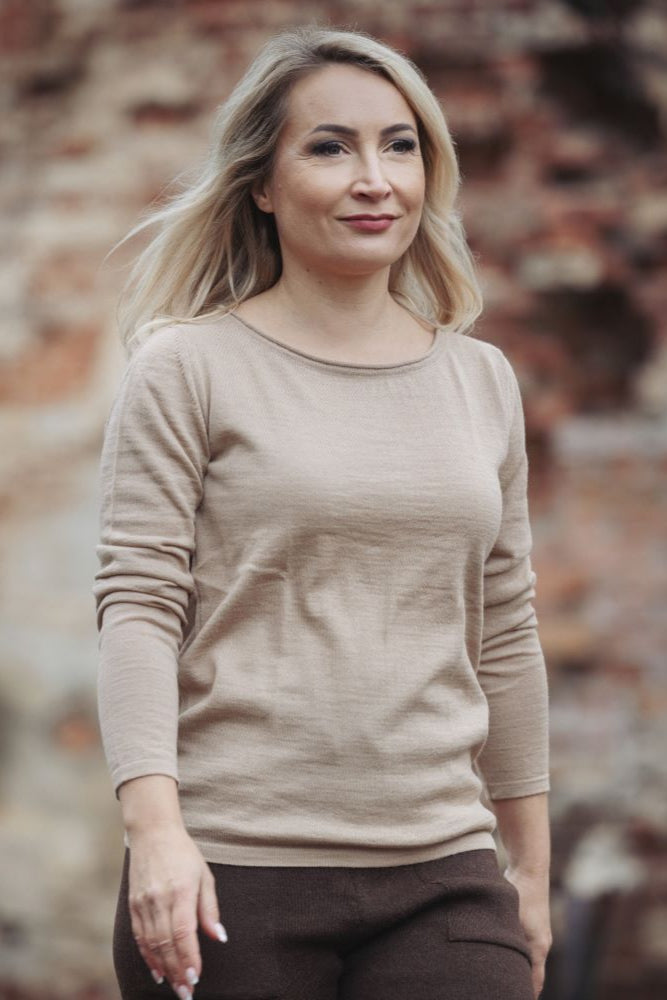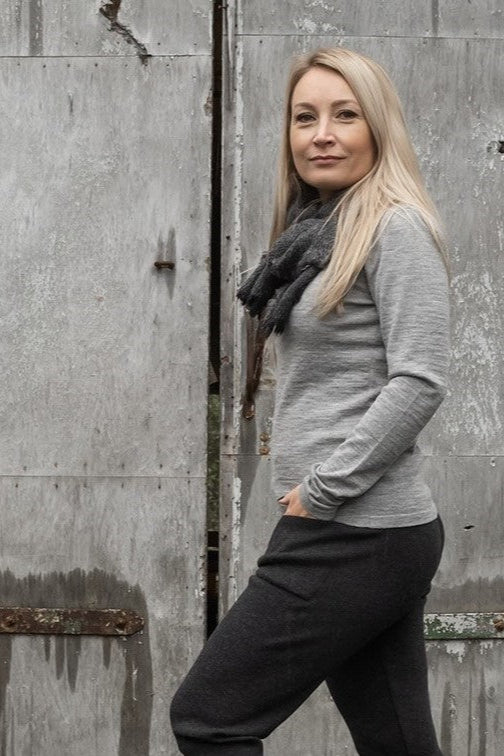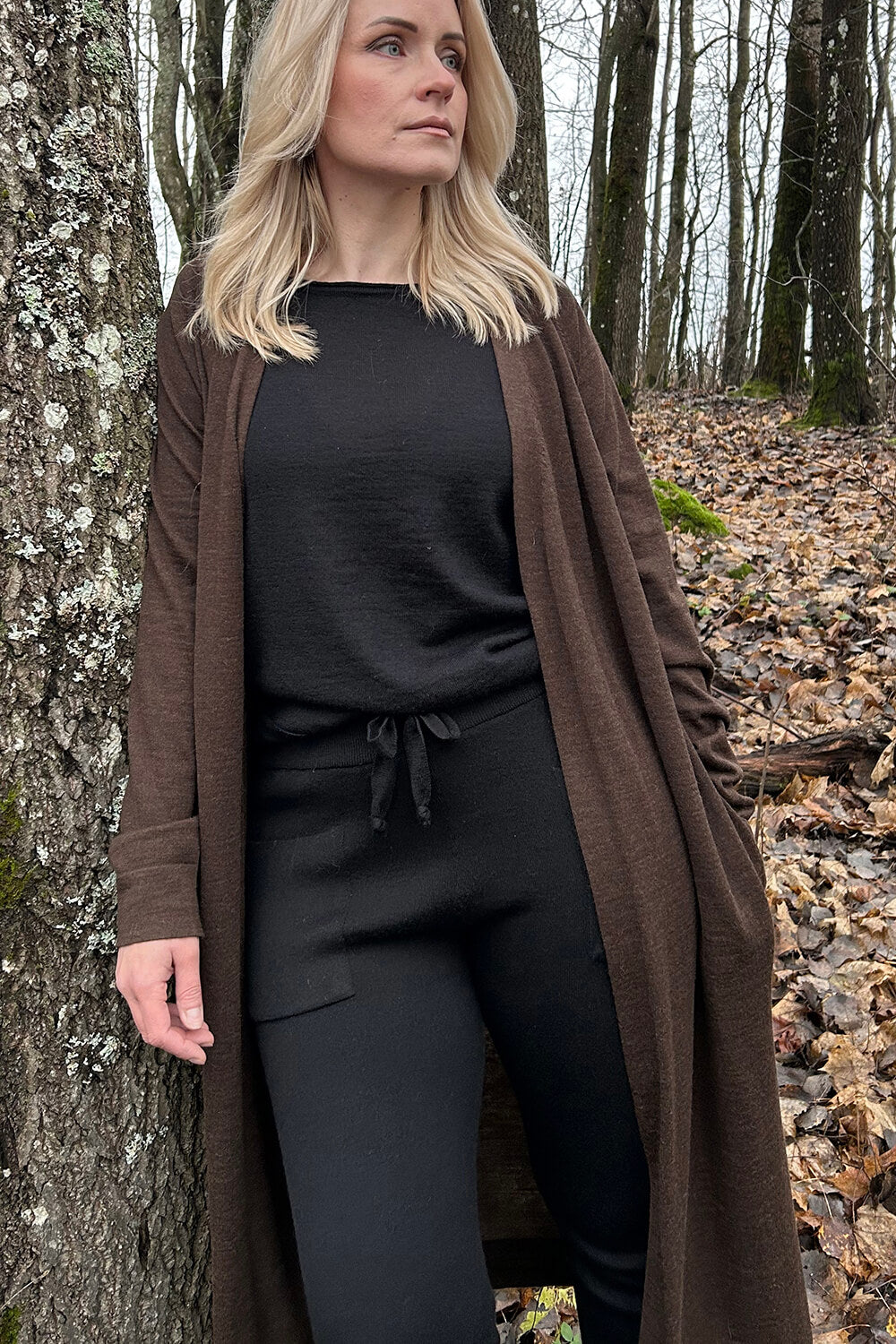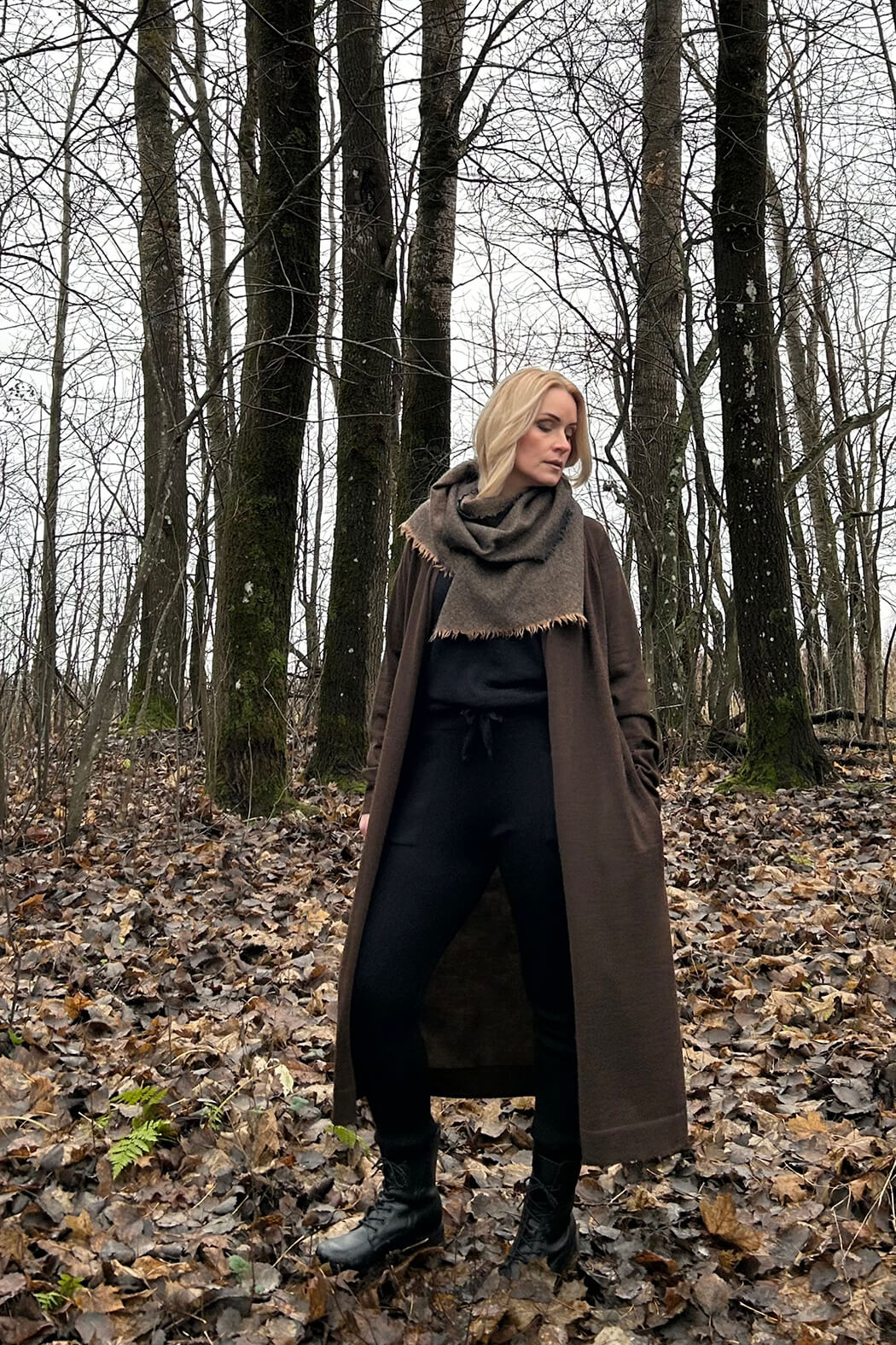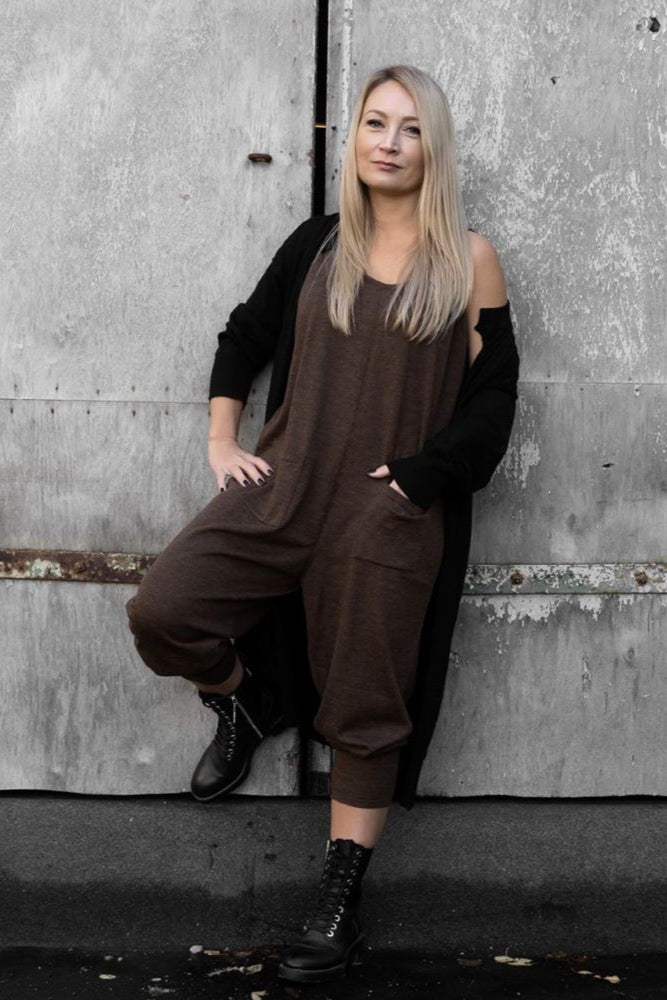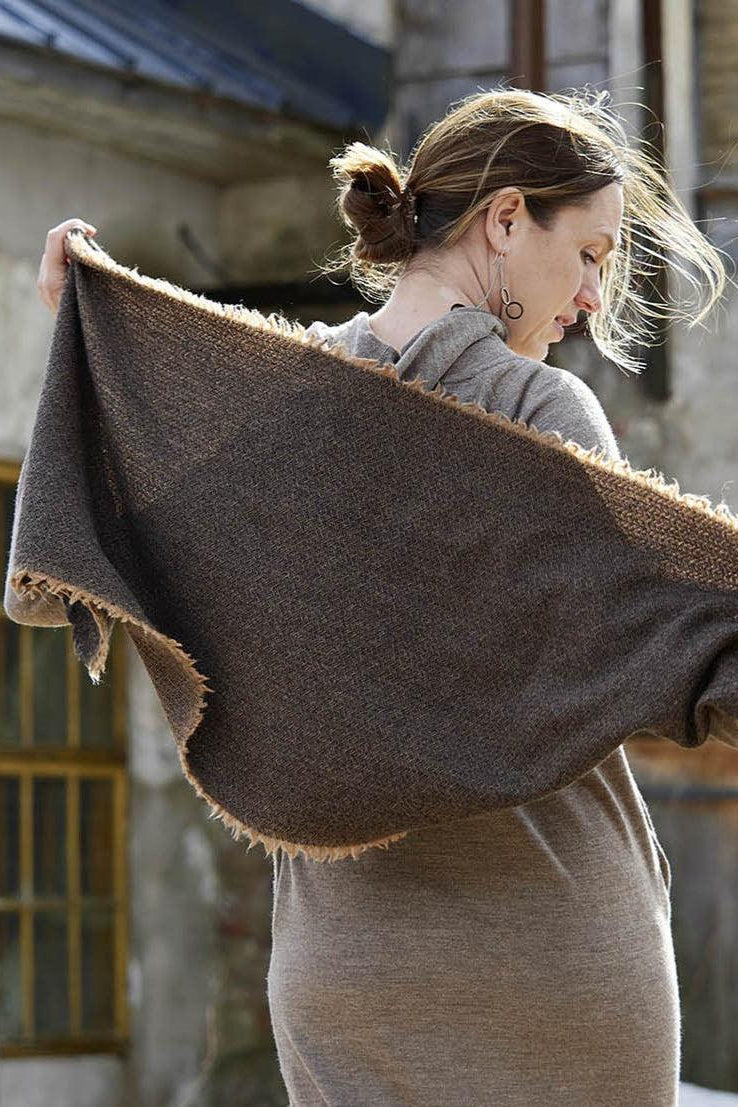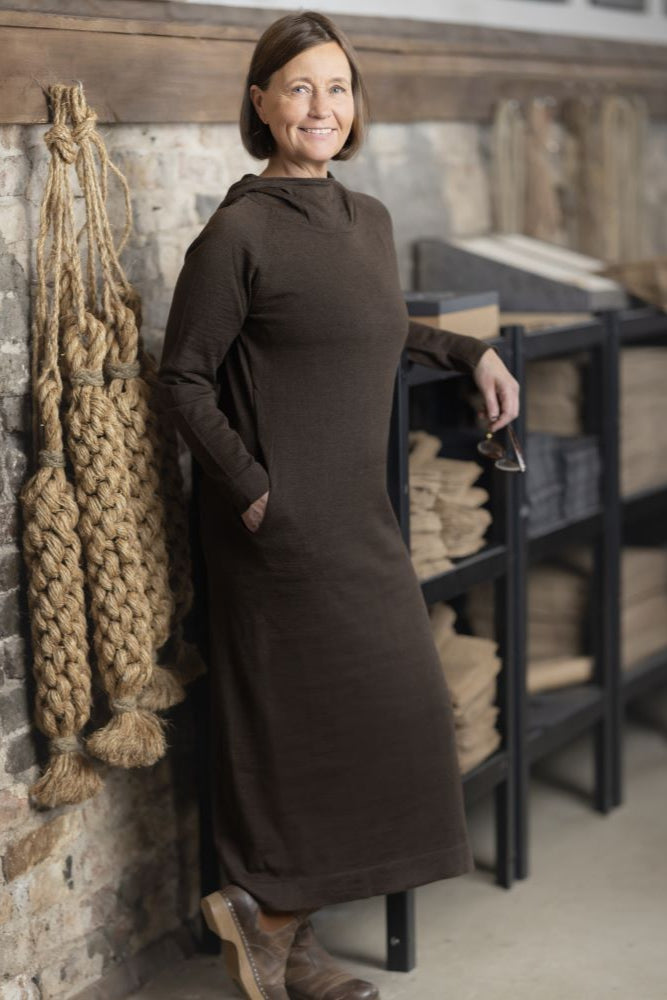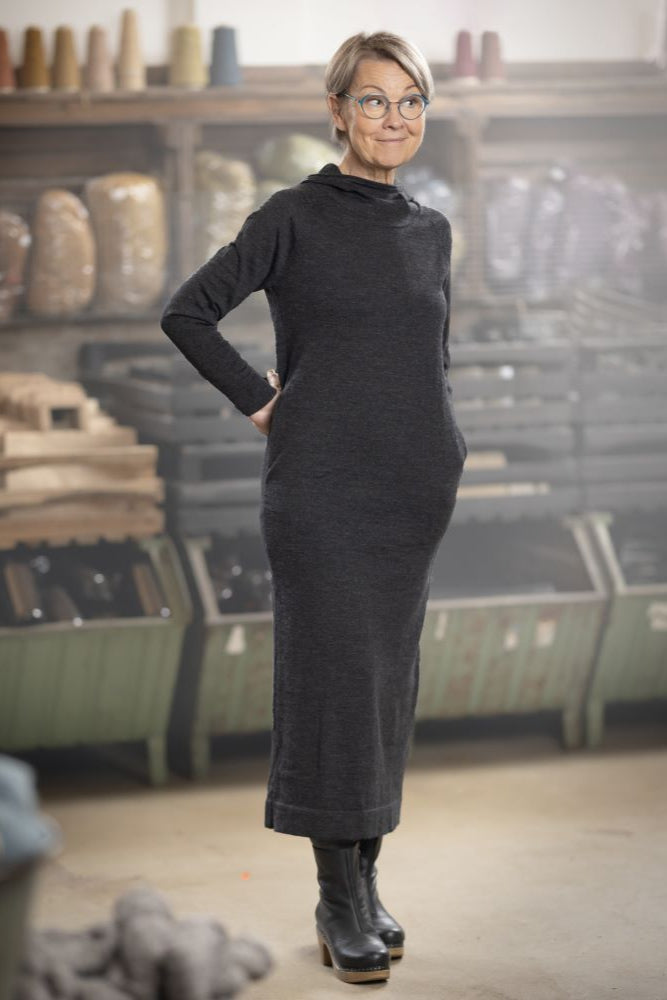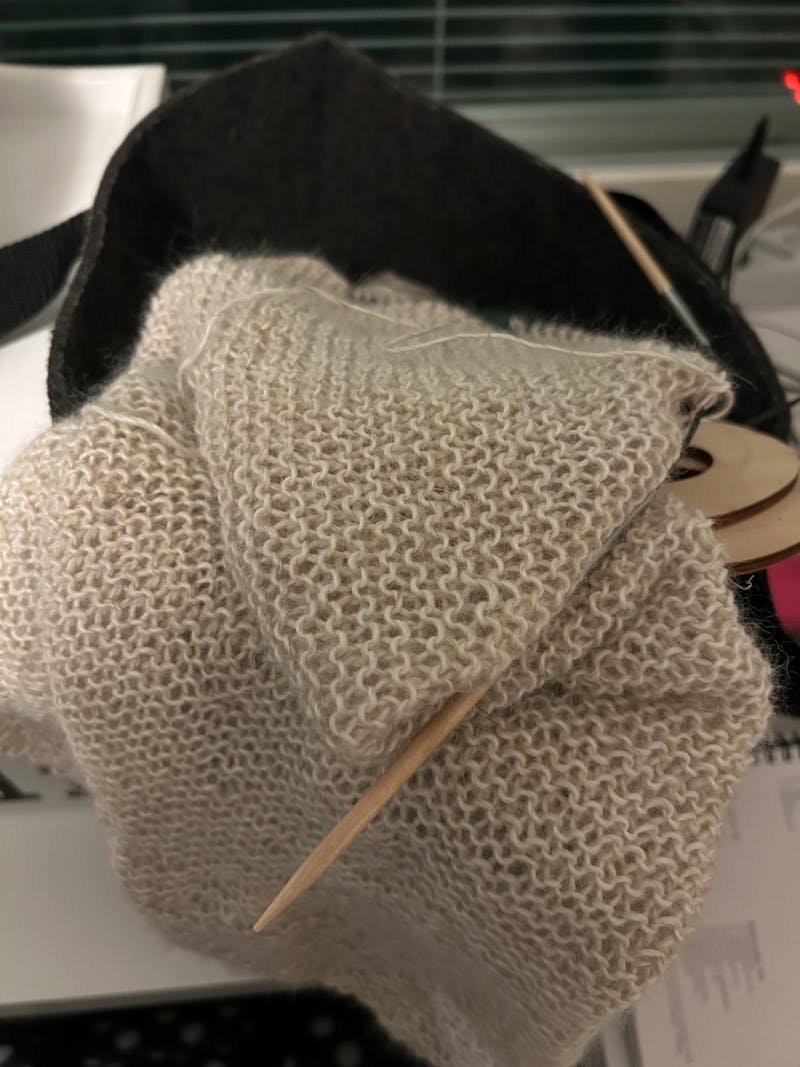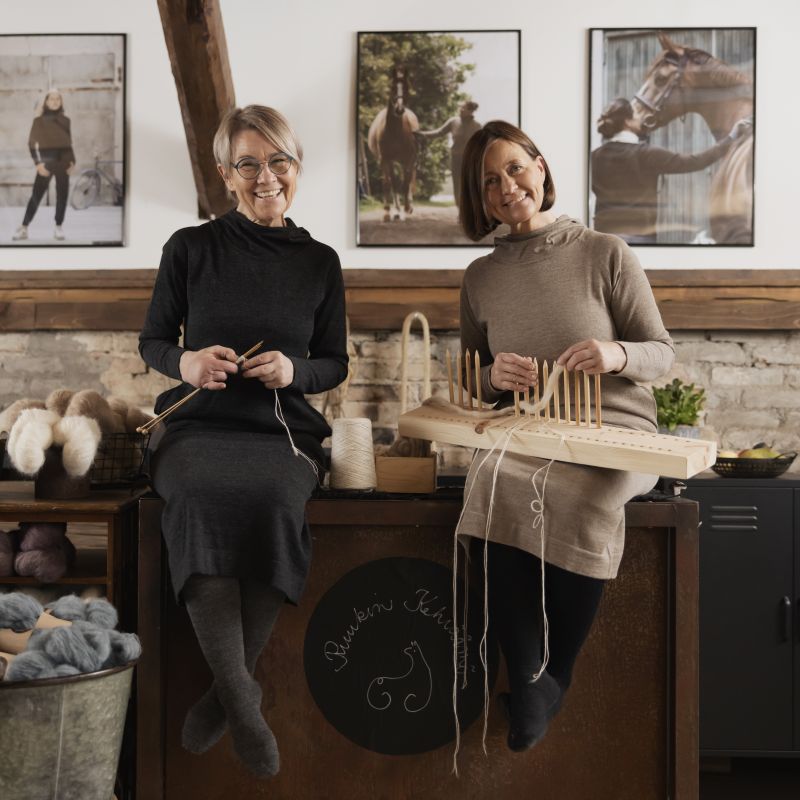Alpaca Royal - 6 dimensions of alpaca knit
Ruukkin Kehräämö knitwear is made from a unique natural fiber whose superior properties will surprise you. No other fiber can adapt to such demanding conditions as nature's own luxury product: Alpaca Royal.
Earth - ecology and ethics

Alpaca farming is ethical and ecological. Alpacas graze freely in the Andes mountains, living in natural balance with their habitat. The soft soles of the alpaca do not wear down the ground like hooves, and grazing does not damage vegetation, but on the contrary supports biodiversity.
High-quality Alpaca Royal fiber enables the production of thin and uniform yarn. That is why Ruukkin Kehräämö knitwear is exceptionally long-lasting. The knitwear does not pill and remains upright even with heavy use. They should be in use, because the most ecological garment is the one you are wearing. When a knitwear reaches the end of its life cycle, the fiber continues its life. The knitwear can be torn back into fibers and recycled for reuse.
Alpaca fiber is 100% biodegradable.
Water - water consumption and water rejection

Alpaca, like other camelids, can survive on extremely little water. The water consumption of alpaca knitwear over its entire life cycle is also lower than that of clothing made from any other natural fiber. The fibers are only washed during the spinning process. Knitting consumes no water at all and requires no post-processing. In addition, finished knitwear needs to be washed very rarely.
When it rains, the alpaca fiber does not get wet, because alpaca wool repels water. Alpaca Royal products retain the same property. Alpaca knitwear is an excellent garment for outdoor activities. You can simply shake off the drops left by drizzle. And even a soaked knitwear feels warm.
Air - lightness and breathability

In the Andes mountains, alpacas face extreme weather conditions. Alpacas can withstand all seasons and temperatures of up to 60 degrees Celsius within a day. Alpacas can withstand freezing winds, as the windproof fiber keeps their skin warm. They can also tolerate scorching heat. How? Alpaca wool is a breathable material. It regulates body temperature like a thermostat, and is unmatched by any other natural and/or technical fiber.
In sweaty weather, an alpaca sweater feels surprisingly cool to wear. Alpaca fiber wicks moisture better than any other technical fiber used in sportswear. Alpaca wool is hypoallergenic and does not contain fat (lanolin) like other wool fibers. That is why Ruukkin Kehräämö's sweaters are also suitable for people with sensitive skin. Alpaca Royal is an antibacterial fiber and naturally repels dirt. Cleaning the sweaters is easy. Often, simply airing them out is enough to freshen up the sweater. If necessary, an alpaca sweater can be washed in a washing machine using the hand wash program or by hand in lukewarm water.
Light - natural UV protection and shine

Alpaca wool's natural UV protection protects alpacas from the sun's harmful rays. Even black alpaca can survive in scorching environments, although the black color absorbs light. Alpacas come in 30 basic colors. This ensures a wide and stunningly beautiful color palette without toxic processing.
Harsh chemical processes; bleaching, post-treatments and washings wear down the fibers and break their surface structure. The inherent properties of natural, minimally processed alpaca fiber are transferred directly to the garment.
Stone - softness

Alpacas are at home on the rocky plateaus of the mountains. Their thick, dense and soft wool cover protects them in the harsh terrain. Alpacas are bred to produce the finest and most uniform wool possible. The genetic makeup determines the quality of the wool. Royal quality fiber is rare, as only 10% of alpacas produce such fine wool.
Alpaca wool is heavily crimped into crimped curls. The more crimps per inch the wool has, the higher the quality of the fiber. Alpaca Royal's densely crimped fiber makes the yarn flexible and luxuriously soft. The elastic yarn helps knitwear hold its shape. Indentations and stretches are easily corrected by steaming.
Ice - insulation

Alpacas graze high in the Andes mountains in variable weather conditions. Snow-capped mountains are no problem for alpacas, as alpaca wool is warm. The high-quality Alpaca Royal wool has 7 times the thermal insulation of other wool fibers. Alpaca fiber is smooth.
The air trapped between the thin fibers and the hollow structure of the fiber act as insulation. The thinner the fiber, the higher quality yarn can be made from it. Alpaca Royal fiber is 18 microns thick. This top-quality fiber is 4 microns thinner than the coarser 22-micron Baby Alpaca. That is why knitwear made from Alpaca Royal fiber is particularly soft, light and warm.


